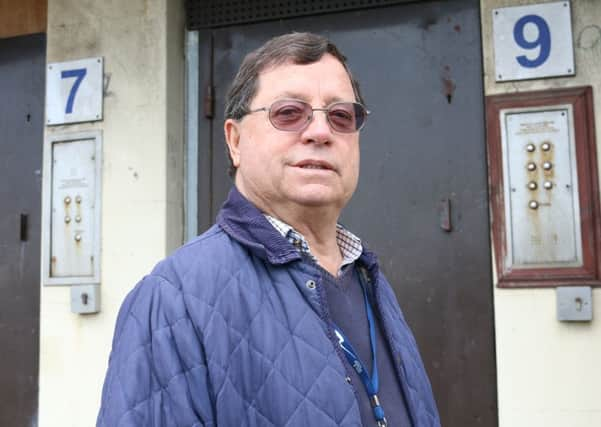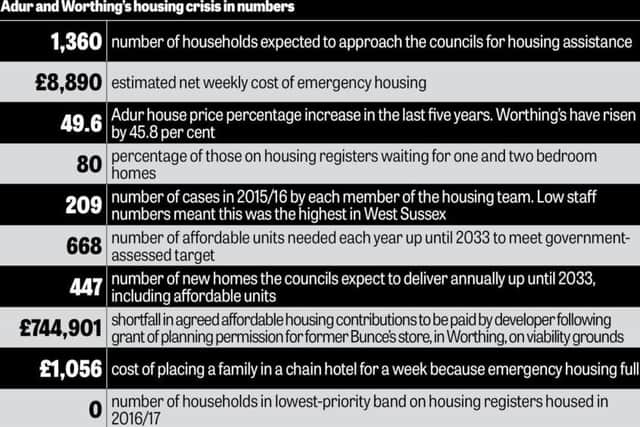Struggles to house most vulnerable residents amid housing crisis revealed


A freedom of information request by the Herald showed only 53 of the 149 highest-priority households on Adur and Worthing councils’ housing registers were housed between last April and the end of March.
The data demonstrates the scale of the challenge faced amid a national housing crisis.
Advertisement
Hide AdAdvertisement
Hide AdIntroducing the councils’ new housing strategy at a Worthing Borough Council meeting last week, leader Dan Humphreys said: “Housing is a critical issue, if not the most critical issue, facing communities around the country today with even the Government reflecting now in its own language that the housing market is broken and homelessness is on the rise.”


The request also revealed:
– Just 12.8 per cent of the 786 households on the Adur waiting list were successfully housed
– Just 13.9 per cent of the 1,271 households on the Worthing waiting list were successfully housed
– None of the 299 households in the lowest priority band in both areas were found accommodation


Advertisement
Hide AdAdvertisement
Hide AdThe homeless must be placed in emergency housing if they meet the councils’ criteria.
They will then be added to the housing register and placed into one of four bands, waiting in temporary accommodation until they find permanent properties.
A council spokesman said band A – the highest – was for those with ‘acute’ needs, such as severe physical disabilities and mental health issues.
They said: “The numbers of registered social landlord properties coming onto the market is very limited, hence the low number of people accommodated who are on the registers.
Advertisement
Hide AdAdvertisement
Hide Ad“Those in the lowest bands have less opportunity to bid and will wait longer to be housed. We also notice that in all bands, some tenants bid on very few properties, which further limits their likelihood of success.”
Could more be done?
The housing strategy aims to reduce rough sleeping by 20 per cent, increase supply of affordable housing by 50 units per year and build at least 100 new properties on Adur Homes land by 2020.
Worthing Borough Council released half of a £10million loan to Worthing Homes this month, which will provide 46 homes for affordable rent and shared ownership at the West Durrington development. Ten flats in Heene Road will also be delivered.
Adur District Council announced plans in November to build its first council homes for more than 25 years, in Albion Street, Soutwick – but opposition councillors believe the authorities can go further.
Advertisement
Hide AdAdvertisement
Hide AdAdur Labour leader Les Alden said: “Adur owns many brownfield sites which could provide housing. The council must get on and arrange for these to be developed quickly. Families are suffering right now.”
Adur cabinet member for customer services Carson Albury said: “In Adur it is our vision for everyone to have a place they can call home, whether it is owned, shared or rented. Adur is committed to working with partners which have skills, abilities and knowledge that complement our commitments.”
30 or 40 per cent?
Worthing Liberal Democrats leader Hazel Thorpe told full council last week the council should set an affordable housing target of 40 per cent for developments.
The councils aim for 30 per cent as part of major projects – but national policies have enabled some developers to successfully argue the target is not financially viable.
Councillor Paul Yallop said: “We see the need but at the moment with the rules we are working under 40 per cent won’t happen.”
The councils were ‘committed’ to increasing supply, the spokesman said.